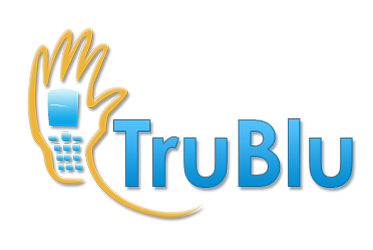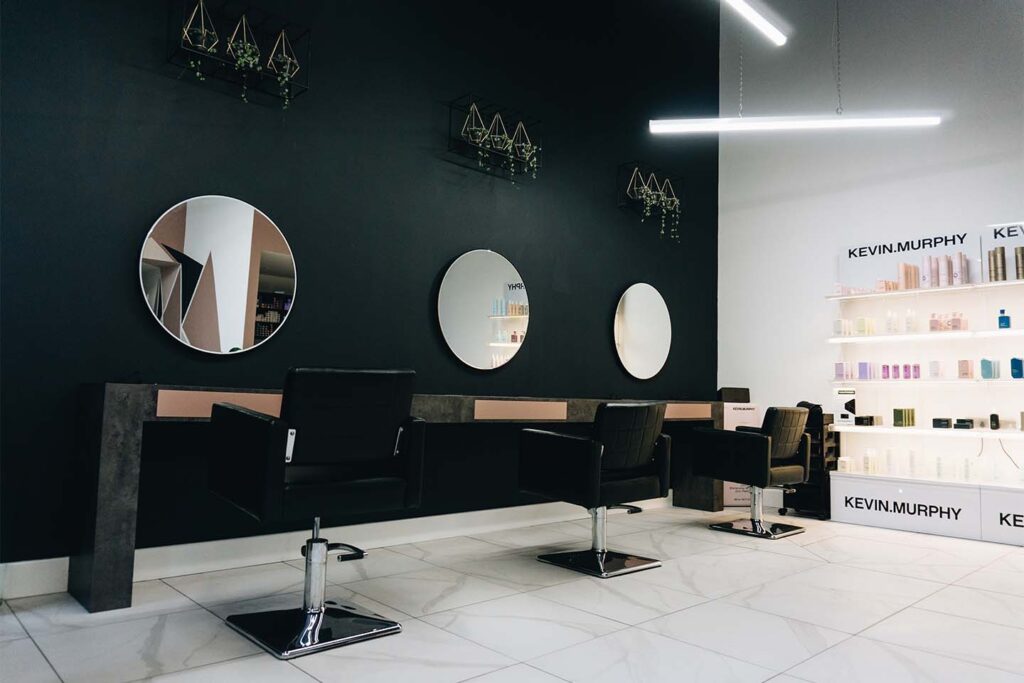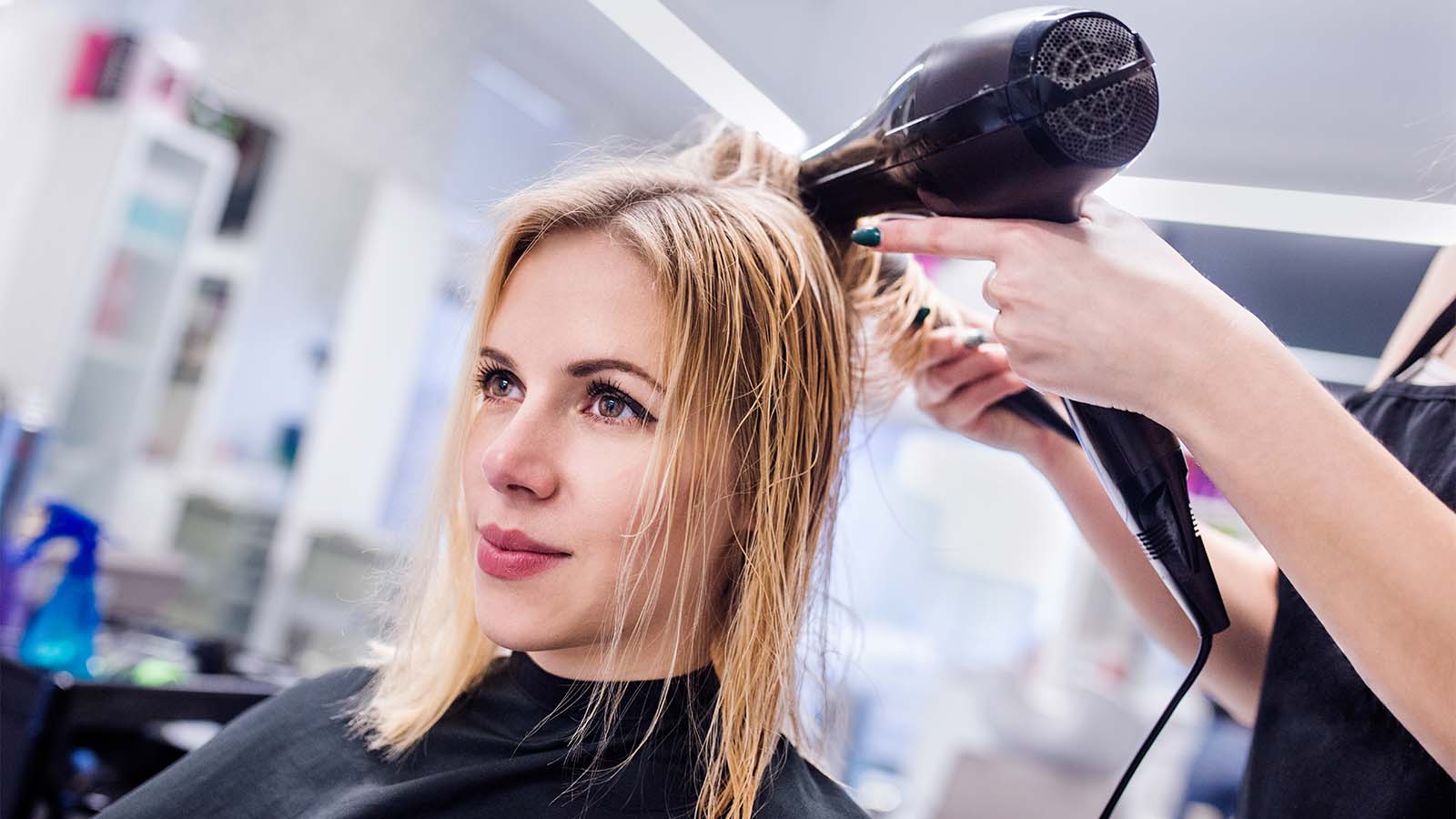In today’s competitive beauty industry, developing a comprehensive marketing plan for your hair salon is essential. A well-crafted plan can not only help you attract new clients but also foster long-term relationships with your existing clientele. From identifying your target audience to leveraging social media and seasonal promotions, there are numerous strategies and tactics to consider.
Initially, it’s important to identify your salon’s unique selling points and focus on differentiating your services and stylists from competitors. A tailored marketing approach will resonate with your potential target customers, leading to increased engagement and overall business growth.
Moreover, a successful marketing plan integrates online presence, in-person engagement, and content creation to provide a cohesive brand experience. By following a goal-oriented approach and continuously adapting to the ever-changing consumer landscape, your hair salon can enjoy sustained success in a dynamic and thriving industry.
Table of Contents
ToggleMarket Research
SWOT Analysis
A SWOT analysis helps identify the internal and external factors that influence your hair salon’s success. This analysis is divided into the following categories:
- Strengths: Unique selling points, experienced staff, convenient location, and positive reputation.
- Weaknesses: Limited services offered, lack of marketing budget, or insufficient clientele.
- Opportunities: Expanding services, targeting additional demographics, partnering with complementary businesses, and leveraging social media/web presence.
- Threats: Emerging competitors, economic downturns, changing consumer preferences, and regulatory challenges.
By understanding these aspects, you will be better equipped to create a tailored marketing strategy.
Target Market
Identifying and understanding your target market is crucial for optimizing your marketing efforts and creating a successful salon. Consider the following factors when defining your target market:
- Demographics: Age, gender, income, education, occupation, and marital status.
- Geographic: Define the area you’ll be serving; consider local neighborhoods, accessibility, and transportation options.
- Psychographics: Personal preferences, values, interests, and lifestyle choices.
- Behavioral: Spending habits, frequency of visits, preferred services, and loyalty to specific brands or salons.
Once you’ve defined your target market, develop marketing materials and communication strategies that speak to their needs and desires.
Competitor Analysis
Analyzing your competitors can provide valuable insights to differentiate your hair salon and improve your marketing strategy. Consider the following points when conducting a competitor analysis:
- Identify competitors: Make a list of direct and indirect competitors in your area, including other salons, barbershops, and beauty product stores.
- Services offered: Examine the range of services provided, their pricing, quality, and any unique offerings or specialties.
- Marketing strategies: Review their marketing efforts, including social media presence, advertisements, promotions, and partnerships.
- Customer base: Evaluate their target audience, clientele demographics, and overall reputation.
By understanding your competition, you can formulate a more effective marketing plan that highlights your salon’s unique strengths and differentiates you from others in the market.
Marketing Goals and Objectives
Establishing well-defined marketing goals and objectives is crucial to the success of a hair salon. These goals and objectives should align with the overall mission of the salon and should aim to achieve quantifiable results that can be easily tracked.
One primary marketing goal for a hair salon is to increase revenue, which can be achieved by attracting new customers and retaining existing ones. To achieve this goal, it is important to set specific, measurable, achievable, relevant, and time-bound (SMART) objectives.
Objective 1: Increase foot traffic by 10% within six months. By conducting targeted marketing campaigns aimed at attracting new clientele, driving more foot traffic to the salon can lead to higher revenue. This objective can be measured by monitoring the number of visitors before and after implementing the marketing strategy.
Objective 2: Boost customer retention rates by 15% within a year. Enhancing customer satisfaction and offering personalized services can lead to a higher rate of returning clients. Monitoring customer feedback and assessing the level of satisfaction with the salon’s services can help achieve this objective.
Objective 3: Improve online presence to generate 20% more bookings within six months. Developing a user-friendly website, implementing an online booking system, and implementing a solid Search Engine Optimization (SEO) strategy can lead to increased online visibility and bookings. Measuring website traffic, conversion rates, and increased bookings will help to track progress toward this objective.
In addition to these objectives, tracking key performance indicators (KPIs) is vital to evaluate the success of the salon’s marketing strategy. Some relevant KPIs for a hair salon include:
- Average ticket price
- Number of bookings per day
- Revenue per stylist
- Customer acquisition costs
- Customer Lifetime Value (CLV)
- Social media engagement
By setting clear marketing goals and objectives, hair salon owners can better direct their efforts and marketing resources to consistently achieve revenue targets and improve overall performance in a professional and sustainable manner.
Marketing Strategies
Product Development
As a hair salon, it’s essential to offer services that cater to the needs and preferences of your target customers. This includes classic haircuts, color treatments, styling, and other specialized treatments. Invest time and effort in staying updated on the latest hair trends, techniques, and products to maintain a competitive edge. Collaborate with hair care brands to offer exclusive products and treatments at your salon. Always prioritize customer satisfaction and be open to feedback for continuous improvement.
Pricing Strategy
Determining the right pricing strategy for your hair salon requires a thorough understanding of your target market and the prices offered by your competitors. To remain competitive, offer a range of pricing options based on the complexity of the service, expertise of the stylist, and the duration of the appointment. Consider introducing special deals for first-time customers, loyalty programs for returning clients, and group packages for events, such as weddings or parties.
| Service | Basic Price | Premium Price |
|---|---|---|
| Haircut | $20 | $40 |
| Color Treatment | $60 | $120 |
| Styling | $30 | $60 |
Place Strategy
The location of your hair salon plays a crucial role in attracting customers. Choose a location with high foot traffic, accessibility, and visibility. Ensure that your salon has ample parking space, comfortable waiting areas, and clean, well-equipped workstations. Collaborate with other nearby businesses to create a network of complementary services, such as beauty spas, nail salons, and fitness centers, to generate additional customers through referrals and joint promotions.
Promotion Strategy
Promoting your hair salon effectively requires a mix of both online and offline strategies. Develop a user-friendly, goal-oriented website that showcases your services, expertise, and customer testimonials. Leverage social media marketing to engage with your audience, share before-and-after photos, and post special offers. Use platforms like Google Ads and geo-targeted advertising to reach potential customers in your area. Participate in local events, sponsor community initiatives, and collaborate with influencers to gain exposure and build a strong reputation for your hair salon.
Digital Marketing
Website Development
A well-designed and user-friendly website is essential for a hair salon’s digital marketing strategy. It serves as the foundation for your online presence and a hub for all your marketing efforts. Your website should:
- Clearly showcase your services and pricing
- Include high-quality images of your salon and team members
- Provide easy online booking functionality
- Highlight customer testimonials
- Be mobile-responsive and SEO-friendly
Social Media Marketing
Leverage popular social media platforms like Instagram, Facebook, and Pinterest to engage with potential clients and showcase your salon’s work through images and videos. Key elements of a successful social media marketing strategy for your hair salon include:
- Consistently posting high-quality, visually appealing content
- Engaging with your followers and potential clients by responding to comments and messages promptly
- Encouraging user-generated content, like reviews and images of clients’ hairstyles
- Collaborating with influencers to expand your reach
Email Marketing
Email marketing remains a powerful and cost-effective way to communicate with your clients, share updates, and promote upcoming offers. To optimize your hair salon’s email marketing efforts:
- Grow your email list with targeted lead generation campaigns
- Segment your list to deliver personalized content based on client preferences
- Create engaging email newsletters with valuable content, such as hair care tips and seasonal styling ideas
- Utilize analytics to track open rates, click rates, and conversions for data-driven improvements
Google Ads
Google Ads is an effective way to drive traffic to your website and increase bookings for your hair salon. By targeting specific keywords related to your services, you can improve your visibility on search results pages and attract potential clients searching for hair salon services in your area. To get the most out of your Google Ads campaigns:
- Conduct thorough keyword research to identify relevant and high-traffic terms
- Structure your campaigns for easy management and optimization
- Use ad extensions to provide more information and call-to-action options, such as phone numbers or appointment booking links
- Monitor and optimize for better performance based on data
Facebook Ads
Facebook Ads allows you to target specific demographics and interests, making it an ideal platform for advertising your hair salon. You can use Facebook Ads to promote special offers, showcase your work, and reach potential clients based on their location and interests. To maximize the impact of your Facebook Ads:
- Choose the right ad format, such as carousel ads for showcasing multiple hairstyles or video ads for engaging storytelling
- Utilize audience targeting tools to reach potential clients who are most likely to be interested in your services
- A/B test various ad creatives and messaging to find the most effective combination
- Monitor and adjust your campaigns based on performance metrics and insights
Offline Marketing
Flyers and Local Papers
One effective salon marketing strategy is the use of flyers and local papers. Design attractive and eye-catching flyers that highlight your salon’s services, special offers, and discounts. Distribute them in high-traffic areas like shopping centers, gyms, and grocery stores. In addition, consider placing ads in local newspapers, as they can reach a wide audience and build brand awareness. When advertising in local papers, ensure your ad is well-designed, has a clear call-to-action, and includes your salon’s contact information.
Magazine Advertisements
Magazine advertisements can be a powerful salon marketing tool, especially if your target audience is interested in beauty, hair care, or fashion. Research magazines that cater to your potential clients, and purchase ad space accordingly. Design appealing and informative ads that showcase your salon’s services, expertise, and unique selling points. Keep in mind that magazines often have longer lead times than newspapers, so plan your advertising schedule accordingly.
Networking and Partnerships
Building networking and partnerships within the community is essential for your salon’s growth and success. Attend local events, join business associations, and interact with other entrepreneurs. Doing so allows your salon to create new connections and establish mutually beneficial relationships. Collaborate with complementary businesses such as makeup artists or spa providers to offer exclusive deals and packages to clients. These partnerships not only enhance your salon’s service offerings but also help attract new customers from different demographics.
Customer Loyalty and Retention
Customer Service
Providing exceptional customer service is essential for maintaining customer loyalty in the hair salon business. Ensure that each client has a positive experience by:
- Actively listening to their needs and expectations
- Offering personalized recommendations and services
- Training staff to be professional, friendly, and attentive
Investing in the user experience will lead to satisfied clients who return to your salon and refer others as well.
Loyalty Programs
Loyalty programs encourage repeat visits and reward clients for their continued support. These programs can include incentives such as:
- Punch cards: A punch card system awards clients a free service or discount after a certain number of visits or spending thresholds are met
- Tiered rewards: Offer different reward levels based on the client’s spending, providing increased benefits as they continue to patronize your salon
Remember to keep the loyalty program simple, easy to understand, and appealing to encourage clients to participate.
Online Booking System
An online booking system not only improves the salon’s efficiency but can also enhance customer loyalty by providing a convenient way for clients to book appointments. Key features of a successful online booking system may include:
- Integration with directories, so potential clients can easily find your salon and book appointments
- A user-friendly interface for clients to book services and make changes to their appointments
- Reminder notifications for clients, helping to reduce the likelihood of missed appointments
Implementing an online booking system helps clients feel in control of their schedules and connected to your salon, fostering strong ties and customer loyalty.
Branding and Salon Experience
A successful marketing plan for a hair salon revolves around creating a strong, memorable brand and providing an exceptional salon experience. This entails focusing on elements such as interior design, service offerings, and professional photography.
Interior Design
The interior design of a salon plays a crucial role in shaping the customer experience and reinforcing the salon’s brand identity. Consider the following aspects to create an inviting and distinct atmosphere:
- Color scheme: Choose a color palette that reflects the salon’s personality and appeals to your target clientele.
- Furniture and layout: Opt for comfortable and stylish furniture, ensuring ease of movement for both clients and staff.
- Lighting: Ensure ample lighting to showcase your services effectively and create a pleasant ambiance for clients.
- Décor and accents: Incorporate décor elements that align with your salon’s brand, such as wall art or branded products.
Service Offerings
To cater to various hair needs and preferences, your salon should offer an extensive range of services. These may include haircuts, styling, coloring, treatments, and even additional services such as manicures and pedicures. Aim for the following:
- Tailored services: Customize your service offerings to meet the specific needs and preferences of your target market.
- Quality products: Use high-quality beauty and hair products to deliver premium results and reinforce your salon’s professional image.
- Skilled professionals: Invest in continuous staff training to ensure your team is up-to-date with industry trends and techniques.
- Exceptional customer service: Provide prompt and personalized attention to clients, ensuring that bookings are well-managed and customers feel valued.
Professional Photography
Visuals are critical in showcasing your salon’s expertise and building a strong presence on social media platforms such as Facebook and Instagram. Collaborate with a skilled photographer and designer to capture striking images that represent your salon’s aesthetic and service offerings. Keep the following in mind:
- Variety of visuals: Capture a diverse range of photographs, including images of styled hair, salon interiors, and your team in action, to create a comprehensive visual narrative.
- Consistent style: Ensure that all photographs adhere to your brand’s visual identity and tone, giving potential clients a clear expectation of what your salon offers.
- High-resolution images: Use high-quality images for all marketing materials and social media posts to establish a professional and polished presence.
By prioritizing interior design, an extensive range of service offerings, and professional photography, you can create a cohesive and memorable brand image that elevates the salon experience for your clients.
Team and Staff Training
A well-trained team is crucial in achieving success for your hair salon. Effective staff training goes beyond enhancing their technical skills in hairdressing; it also covers soft skills and business acumen. Let’s explore various dimensions of the team and staff training for your hair salon marketing plan.
Define goals and objectives: Begin by establishing clear aims and objectives for your training program. These should address technical hairdressing skills, such as cutting and coloring; soft skills like customer service, communication, and team management; and business skills, including financial management and information handling.
Employee manual: Develop a comprehensive employee manual that outlines your salon’s policies, procedures, and brand identity. This will serve as a foundation for all staff members, ensuring they are familiar with your values and business approach.
Hands-on training methods: Utilize demonstrations and shadowing, two effective hands-on training techniques. Demonstrations allow experienced stylists to showcase best practices, while shadowing gives new employees the opportunity to observe and learn in real-time from seasoned professionals.
Open-door policy: Foster an environment where your team feels comfortable discussing concerns, asking questions, and seeking guidance. This open-door policy encourages constant learning and improvement.
Regular reviews and staff meetings: Conduct frequent performance evaluations and maintain open lines of communication about your staff’s progress and development. This will not only help you identify any necessary additional training but also demonstrate your vested interest in their growth.
Link training to accounts: Employ a system that links employee progress and success with their compensation and other account-related aspects. This will motivate them to actively participate in the training programs, ensuring they put in the efforts required to refine their skills and align with the salon’s objectives and values.
Aligning your team and staff training with your overall marketing plan is essential. By investing in your team’s development, your hair salon will boost customer satisfaction, strengthen its brand identity, and ultimately contribute to a successful and sustainable business.
Budget and Resource Allocation
Marketing Budget
A well-planned marketing budget is crucial for a hair salon’s success. Consider allocating funds to various marketing channels based on the expected effectiveness and return on investment. Some essential aspects to include in the marketing budget are:
- Google My Business: Create or update your salon’s business profile, which is essential for local search visibility and customer engagement. Ensure to allocate resources for regular updating and management.
- Website Traffic: Invest in search engine optimization (SEO), content creation, and online advertising to boost website traffic and attract potential customers.
- Paid Advertising: Allocate funds for Google Ads, Facebook advertising, and other relevant platforms for promoting your salon.
- Print Material: Flyers, business cards, brochures, and event sponsorship are forms of traditional marketing that you may allocate a portion of your budget to reach a broader audience.
- Social Media: Plan your budget for social media promotions, including sponsored posts, influencer partnerships, and content creation.
- Email Marketing: Allocate resources for email marketing software, content development, and tracking email campaigns.
Sales Forecast
Projecting your sales is an essential part of the hair salon marketing plan. A sales forecast helps you determine your future revenue, set reasonable targets, and guide your resource allocation accordingly. To create a sales forecast, consider the following steps:
- Analyze your historical sales data, if available, or industry benchmarks.
- Determine your salon’s pricing structure and service offerings.
- Estimate the number of clients you expect to target and retain over a specific timeline, such as a quarter or a year.
- Calculate the potential revenue based on the estimated number of targeted clients, repeat clients, and the price of offered services.
- Continuously monitor and adjust the sales forecast based on the actual results and market changes.
Resource Allocation
Effectively allocating resources to support your hair salon marketing plan is crucial. Consider the following key resources and how to allocate them optimally:
- Human Resources: Hiring skilled and experienced staff is vital for running a successful salon. Allocate resources to recruit, train, and retain talented hairstylists, customer service representatives, and marketing professionals.
- Tools & Technology: Invest in software and tools for appointment scheduling, customer relationship management (CRM), email marketing, social media management, and financial management. Allocate funds for regular updates, maintenance, and employee training.
- Physical Resources: Allocate funds to maintain a clean, well-designed salon that attracts customers and provides the best possible experience. This includes purchasing salon furniture, equipment, and supplies.
- Time: Time management is critical to grow a hair salon business. Consider allocating time for employee training, client outreach, social media posting, and other marketing efforts in line with your marketing plan.
By carefully planning your marketing budget, sales forecast, and resource allocation, you will be better equipped to execute a successful hair salon marketing plan. Strategic investments in key channels, utilizing data to guide decisions, and optimizing resource use will help your salon reach its goals and attain sustainable growth.
Monitoring and Measuring Success
To make sure your hair salon business plan is effective and yielding the desired results, it’s crucial to monitor and measure its success. Tracking key performance indicators (KPIs) help you understand how well your salon is doing and identify areas that might need improvement.
One of the primary ways to measure the success of your marketing plan is by assessing the return on investment (ROI). Calculate the ROI by subtracting the cost of the marketing campaign from the total sales growth in that period. Then, divide that figure by the marketing campaign cost. For example, if your campaign cost $500 and generated $4,000 in sales, your ROI would be 700%.
Customer acquisition cost (CAC) is another crucial metric to monitor in your marketing campaign. To find your CAC, divide the total marketing expense during a specific time by the number of new clients acquired. Keeping track of CAC helps you determine whether your current marketing efforts are cost-effective and profitable.
In addition to ROI and CAC, you should pay attention to KPIs such as:
- Foot traffic: Keep track of the number of new and returning clients visiting your salon.
- Customer satisfaction: Collect feedback from clients to understand their level of satisfaction with the services provided.
- Online engagement: Monitor the performance of digital marketing efforts through web analytics, social media engagement, and the number of online bookings.
Consider promoting your hair salon in the local paper, as it can help attract potential clients within your community and increase brand visibility. Optimize and track the effectiveness of local paper advertisements by including website links and special offers to motivate readers to explore your salon’s offerings.
Regularly reviewing and adjusting your salon’s budgets play a significant role in measuring success as well. Analyze your profit margins to ensure your salon is operating cost-effectively. Allocate a percentage of your revenue for marketing expenses, assess the results, and reallocate funds if needed to achieve better results.
By closely monitoring and measuring the success of your marketing plan, you can make informed decisions to grow and maintain a thriving and profitable hair salon.
Frequently Asked Questions
What are the key strategies to promote a hair salon?
- Offer unique and quality services that cater to your target market. This may include a range of hair treatments, styling options, and beauty services.
- Leverage social media and digital platforms to increase online visibility and engagement.
- Develop a strong brand identity that resonates with your target audience.
- Implement loyalty programs and promotions to incentivize repeat business and referrals.
- Provide exceptional customer service to develop long-term relationships with clients.
How can social media be utilized effectively for a hair salon?
- Post engaging and visually appealing content regularly to showcase your services, staff expertise, and salon atmosphere.
- Utilize hashtags and location tags to increase your visibility to potential clients in your area.
- Leverage user-generated content by encouraging clients to share their experiences in your salon on social media.
- Collaborate with influencers and partner with complementary businesses to broaden your reach.
- Interact with your following by replying to comments and messages to foster strong relationships with your audience.
What are the essential components of a successful salon marketing campaign?
- Clearly defined marketing objectives and target audience.
- Comprehensive market research to analyze competitors and identify your salon’s unique selling propositions.
- A focused message that communicates your salon’s values, services, and benefits to clients.
- A promotional plan that includes both online and offline marketing tactics, such as social media, email marketing, outdoor advertisements, and community events.
- Thorough tracking of marketing campaign performance to make data-driven adjustments and improvements.
How can a hair salon differentiate its services from competitors?
- Offer specialty services or techniques that set your salon apart from others.
- Make use of technologically advanced equipment and products.
- Hire and train staff with unique skills and certifications to offer exclusive services.
- Create a captivating salon ambiance with a comfortable, modern, and clean design.
- Collaborate with local businesses to offer unique experiences or packages, such as spa and salon bundles.
What customer retention strategies can be employed in a hair salon?
- Develop a personalized client experience by maintaining client records and tailoring services to individual needs.
- Encourage client feedback and act on it to make improvements.
- Create a loyalty program that rewards repeat business with discounts or free services.
- Offer referral incentives to clients who bring in new customers.
- Send periodic email or text reminders and promotions, keeping clients engaged and informed.
Which promotional offers or loyalty programs are effective in attracting clientele to a hair salon?
- Offer a new client discount to encourage prospective clients to try your salon.
- Provide value-based packages for services that clients use frequently, such as haircuts or color treatments.
- Create a loyalty program that rewards clients with points, redeemable for future services or products.
- Implement seasonal promotions and holiday offers to encourage clients to visit during specific periods.
- Collaborate with local businesses to offer joint promotions that attract a broader audience to both establishments.




